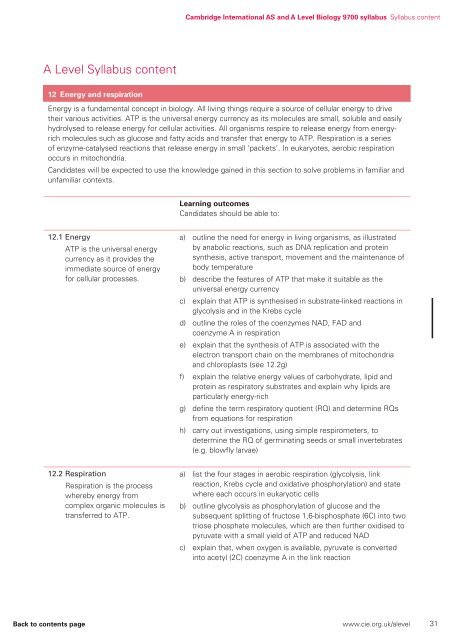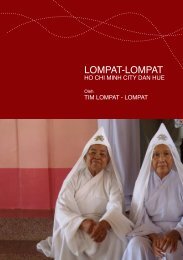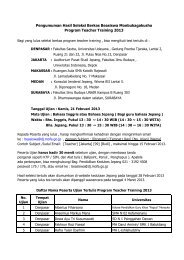9700_y16_sy
9700_y16_sy
9700_y16_sy
You also want an ePaper? Increase the reach of your titles
YUMPU automatically turns print PDFs into web optimized ePapers that Google loves.
Cambridge International AS and A Level Biology <strong>9700</strong> <strong>sy</strong>llabus Syllabus content<br />
A Level Syllabus content<br />
12 Energy and respiration<br />
Energy is a fundamental concept in biology. All living things require a source of cellular energy to drive<br />
their various activities. ATP is the universal energy currency as its molecules are small, soluble and easily<br />
hydrolysed to release energy for cellular activities. All organisms respire to release energy from energyrich<br />
molecules such as glucose and fatty acids and transfer that energy to ATP. Respiration is a series<br />
of enzyme-catalysed reactions that release energy in small ‘packets’. In eukaryotes, aerobic respiration<br />
occurs in mitochondria.<br />
Candidates will be expected to use the knowledge gained in this section to solve problems in familiar and<br />
unfamiliar contexts.<br />
Learning outcomes<br />
Candidates should be able to:<br />
12.1 Energy<br />
ATP is the universal energy<br />
currency as it provides the<br />
immediate source of energy<br />
for cellular processes.<br />
a) outline the need for energy in living organisms, as illustrated<br />
by anabolic reactions, such as DNA replication and protein<br />
<strong>sy</strong>nthesis, active transport, movement and the maintenance of<br />
body temperature<br />
b) describe the features of ATP that make it suitable as the<br />
universal energy currency<br />
c) explain that ATP is <strong>sy</strong>nthesised in substrate-linked reactions in<br />
glycolysis and in the Krebs cycle<br />
d) outline the roles of the coenzymes NAD, FAD and<br />
coenzyme A in respiration<br />
e) explain that the <strong>sy</strong>nthesis of ATP is associated with the<br />
electron transport chain on the membranes of mitochondria<br />
and chloroplasts (see 12.2g)<br />
f) explain the relative energy values of carbohydrate, lipid and<br />
protein as respiratory substrates and explain why lipids are<br />
particularly energy-rich<br />
g) define the term respiratory quotient (RQ) and determine RQs<br />
from equations for respiration<br />
h) carry out investigations, using simple respirometers, to<br />
determine the RQ of germinating seeds or small invertebrates<br />
(e.g. blowfly larvae)<br />
12.2 Respiration<br />
Respiration is the process<br />
whereby energy from<br />
complex organic molecules is<br />
transferred to ATP.<br />
a) list the four stages in aerobic respiration (glycolysis, link<br />
reaction, Krebs cycle and oxidative phosphorylation) and state<br />
where each occurs in eukaryotic cells<br />
b) outline glycolysis as phosphorylation of glucose and the<br />
subsequent splitting of fructose 1,6-bisphosphate (6C) into two<br />
triose phosphate molecules, which are then further oxidised to<br />
pyruvate with a small yield of ATP and reduced NAD<br />
c) explain that, when oxygen is available, pyruvate is converted<br />
into acetyl (2C) coenzyme A in the link reaction<br />
Back to contents page<br />
www.cie.org.uk/alevel<br />
31





